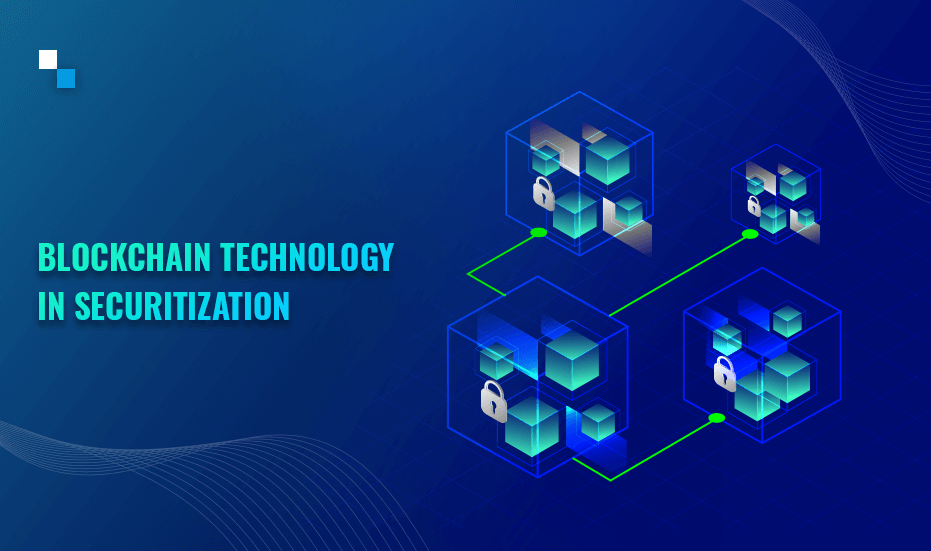Financial markets and market participants now have a particularly dynamic nature. This is a result of the recent significant changes to the financial industry’s digital landscape. When Bank of America began processing checks on the first financial mainframe in 1953, the evolution of digitization in finance began. The first debit card was then introduced by Barclays in 1966, opening up global banking to everyone. This marked the last significant development before the advent of blockchain in 2008. The finance industry as a whole is now more accessible and efficient with technological improvements of blockchain in securitization.
AI-driven analytics, real-time cloud computing, transaction-process automation, and the internet of things are important innovations that will continue to influence the direction of the banking industry. Blockchain is a technology that is just beginning to become widely used. Blockchain is a decentralised network that uses distributed ledger technology to enable the digital storage of asset ownership data and the tracking of asset movement. With numerous applications in the banking industry, blockchain securitization technology is very disruptive because the data saved there cannot be changed. Blockchain technology in securitization is one of the more recent advancements in the usage of blockchain in finance. Get ahead and learn more about this!
A Basic Survey on Blockchain Securitization
Blockchain will significantly alter the effectiveness, security, and transparency of many financial sector activities. All participants in the securitization lifecycle, including originators, supports/guarantors, and servicers, as well as rating offices, trustees, financial experts, and even controllers, may be impacted by the innovation’s ability to simplify processes, reduce costs, speed up exchanges, improve transparency, and strengthen security. Beyond the advantages of loan origination, underwriting, rating assignment and reviews, loan servicing, smart contracts, and secondary market trading, blockchain technology in securitization have a long way to go. The ability to track financial assets on a blockchain can reduce reliance on credit card rating agencies and enable financial professionals to pay closer attention to how advantages are presented and figure-related risks.
Blockchain in securitization can improve data security while also reducing the burden of due diligence and eliminating regulatory inefficiencies in the securitization process. It will completely remove time gaps in data and payment flows throughout the securitization process as well as within the secondary market thanks to its disintermediation and synchronic recording of data across the system. This increase in certainty and speed has the potential to significantly reduce counterparty risk, free up capital, and lower the come thresholds that investors expect. Blockchain’s capacity to increase transaction security and fraud mitigation may appeal to the securitization industry, where knowledge integrity is paramount. In order to reduce transaction costs and increase operational efficiencies, many financial institutions have started experimenting with applying blockchain securitization technology to financial transactions, particularly in the areas of money-related notes, cross-border instalments, and other areas.
How Securitization Can Benefit from Blockchain Technology?
The many players engaged in the securitization process, including originators, issuers, servicers, and investors, stand to gain from a multitude of benefits offered by blockchain technology in securitization.
Better quality loan originations- By developing a set of smart contract templates for securitization, one can enhance the loan origination process and asset pool as well. Blockchain in securitization quickly creates the asset pool and issues the underlying securities. Larger homogeneous asset pools can be developed as a result, allowing for improved statistical analysis and asset diversification. Investor protection comes in the form of greater credit enhancement as a result of the potential economic stress being reduced on them.
Effective transaction with accurate analysis- All cash flow between the parties engaged in the securitization process is tracked on the blockchain. Since every transaction is documented and saved on the blockchain securitization technology, this leads to quicker and more accurate cashflow reporting as well as increased execution transparency. This technology’s wider array of analytics enables more robust statistical inference, improving the predictability of results. The many banking procedures that could utilise blockchain in the securitization process are listed below, along with the existing rates of blockchain adoption in banking.
Implementing finance frameworks- Securitization has come under fire for its intricate transactional frameworks, which helped contribute to the 2008 financial catastrophe. Blockchain securitization would streamline these processes and give regulators, auditors, and other outside parties access to transparent information. As a result, there would be a rise in the demand for securitization-led structured finance solutions globally, increased originations for investors, and a wider range of structured finance products available to borrowers.
Barriers to the Widespread Adoption of Blockchain Technology in Securitization
The blockchain securitization process includes a number of dangers and restrictions that need to be acknowledged despite the expanding use and influence of blockchain in contemporary banking activities. Lessons from the global financial crisis of 2008: adoption is prohibited by strict laws and regulations The finance industry is among the most strictly regulated in the world, which should be noted first. Regulators are particularly interested in integrating blockchain technology in securitization deals because they were crucial in the 2008 global financial crisis, including collateralized debt/mortgage obligations. The adoption of decentralised technologies, such as blockchain, could raise red flags for financial authorities and watchdogs because securitization transactions are heavily regulated due to their intrinsically complex structure.
As technology advances, so do the threats. Securitization is a significant source of money for the economy as a whole as well as the financial industry. Changes to the market structure of the sector, as well as the safeguards and underlying technology infrastructure, should only be handled with the utmost caution. Industry professionals and blockchain experts have been consulted to identify a number of problems that must be fixed before the sector can successfully move operations for blockchain in securitization. These possible threats can be divided into three groups:
- Data privacy and security- Given the volume of data on the same technological platform, a successful hack might have catastrophic systemic effects. Due to the distributed nature of the blockchain, which shares and keeps sensitive data on numerous nodes, privacy concerns could also surface.
- Non-tested technology- Blockchain securitization technology is still rather fresh. Furthermore, even though a number of blockchains have a long history, many smart contracts and other blockchain applications have not yet attained a degree of reliability that can be considered to be infallible.
- Regulatory and legal ambiguity- Regulators will have to accept the use of blockchain technology in securitization for entering, verifying, and securing data. One possibility is that a new monitoring setting with a regulatory presence on the blockchain will be required. The way financial institutions should use blockchain in regulatory reporting will need to be re-evaluated by regulators.
What’s The Future?
You must be wondering How Securitization Can Benefit from Blockchain Technology? Well, Vanguard, a renowned investment management firm in the US, has made significant investments in the creation of blockchain securitization solutions from 2020 to the present. By June 2020, Symbiont, BNY Mellon, Citi, and State Street had joined forces with Vanguard to create a blockchain pilot that aimed to digitise the issuing of asset-backed securities. The fact that this transaction’s origination, servicing, financing, and sales were all carried out on the blockchain has further solidified the case for the widespread use of blockchain securitization.
It will take some time to gain traction in the financial markets because there have been very few significant transactions to support it. However, due to its capacity to open up new market prospects not present in conventional securitisations, blockchain technology in securitization continues to gain appeal among the numerous worldwide financial market participants.
Conclusion-
The key to developing this idea is to tackle blockchain securitization from a global perspective, which includes standardising international laws and creating solid technology compatibility. The major forces behind the exponential growth of blockchain securitization would be the availability of the required assistance and the upbeat attitudes of all stakeholders.
Hire renowned technical partners like Antier that can assist you in making the best use of and profiting from such cutting-edge developments. Commercial lending’s digital environment is rapidly changing, so it’s critical to pinpoint which cutting-edge solutions would be the most practical. Talk with the experts now!





